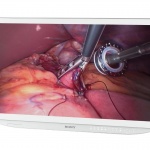
News • Implants
Screws that fit the body’s notches
Complex bone fractures are often set with titanium or steel screws and plates. However, if these remain in the body for some time, they can cause health problems. A new bioceramic screw nail has the capacity of replacing the currently used metal components. It can be easily introduced into bone and does not have to be removed.


























